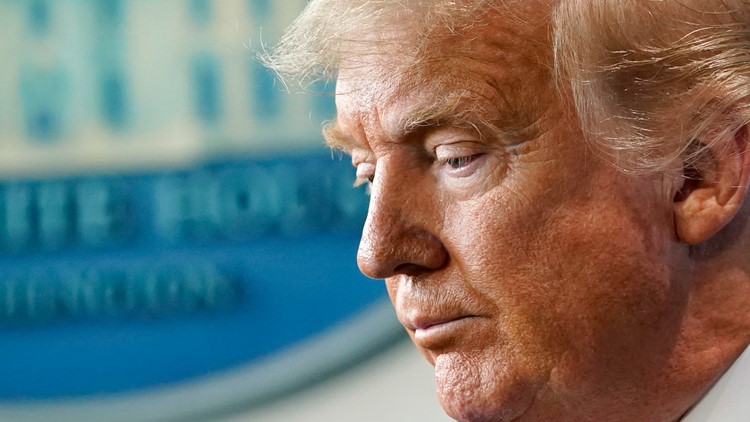Last week, President Donald Trump tweeted a chart titled Jobs Boom in Full Swing. The chart, tracking U.S. employment figures, says at the bottom that the economy generated over 9 million jobs in the last three months.
THE QUESTION
Is a jobs chart showing huge growth tweeted by President Trump accurate?
THE ANSWER
The figures are correct, they’re just presented in a way that doesn’t fully reflect the magnitude of job loss. The chart line shows how many jobs were lost or gained. It does not indicate a cumulative of how many total jobs there currently are.
The chart presents data for each three-month period independently of what happened in the months prior. So yes, there has been job growth over the past few months, but that occurred after even greater job loss due to COVID-19. There are still fewer jobs now than there were at the start of the pandemic.
WHAT WE FOUND
The chart, labeled as tracking employment figures from 2018 through 2020 in three-month increments, is based on Bureau of Labor Statistics data, says Maurine Haver, president and chief executive of Haver Analytics. Although the chart is credited to the company, it only provided the software to the White House and did not create the chart itself nor three similar ones that Trump tweeted on Thursday, she said.
The chart shows basically a flat line from 2018 until about the time of the economic shutdown because of COVID-19, which covered much of March and April this year. At that time, the chart shows a sudden plunge of almost 22.5 million jobs, followed by a steep gain of 9 million jobs.
However, the unprecedented numbers of jobs lost affect the presentation of the data. The jobs line from 2018 until the COVID-19 emergency looks flat, and that’s because the number of those who were suddenly unemployed dwarfs the other figures. In March, employment declined by 1,373,000 jobs, and in April an additional 20,787,000 jobs were cut, Haver said citing BLS figures.
“The tick marks are in millions and usually our job change figures are in thousands,” she said. “If you go back over all history, this drop in jobs in April is many times more than we ever lost before.”
In July, employment grew to 139,582,000 people. But that is still 13 million people below the pre-shutdown figure of 152,463,000 employed in February. People returning to work after furloughs probably account for most of those jobs, she said.



